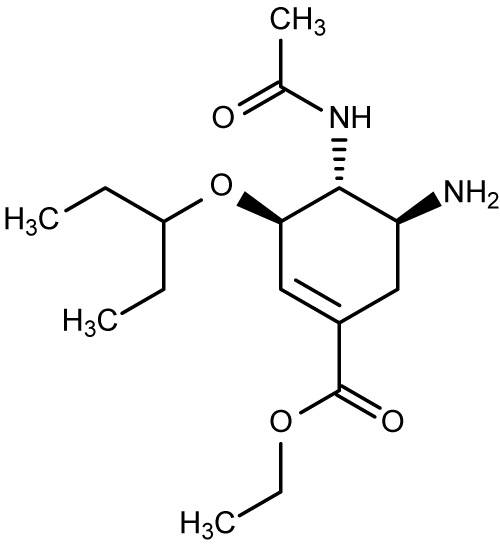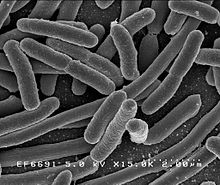
Oseltamivir, also known as Tamiflu, inhibits the enzyme neuraminidase in influenza virus. The lab of Stephen Winters has developed new neuraminidase inhibitors that bind the enzyme covalently, and may have potential as new antiviral drugs.
Each year untold numbers of people come down with the flu during flu season. There are several antiviral medications that can be used to treat the flu and get rid of the infection. The most popular of these is Tamiflu, which works by inhibiting an enzyme called neuraminidase present in the influenza virus. Neuraminidase is the “N” in the strain names (i.e. H1N1, H3N2, etc.). With prolonged exposure, flu strains can become resistant to antiviral medications like Tamiflu. So there is a need for new drugs to be developed. Chemical and Engineering News covers a recent Science paper from the lab of Stephen G. Winters that investigates new neuraminidase inhibitors:
Four neuraminidase inhibitors are approved or in development for postinfection treatment. Tamiflu is the most popular, but flu can evolve into strains insensitive to it. Relenza is administered by oral inhalation, which has limited its use. Peramivir was withdrawn from a Phase III trial last year, and laninamivir is scheduled to enter Phase II, although both are approved in Asia.
The new compounds emerged from efforts by Stephen G. Withers and coworkers to determine how neuraminidase works molecularly (Science,DOI: 10.1126/science.1232552). Their study shows that neuraminidase catalyzes sialic acid cleavage by a mechanism involving a covalent intermediate. They determined the structure of the intermediate and designed sialic acid analogs that bond covalently to the viral neuraminidase active site but release very slowly, thus disabling it, and do not inhibit human neuraminidase. The compounds may evade viral resistance more effectively than Tamiflu because their structures more closely resemble that of sialic acid. Also, covalent bonding permanently inactivates the neuraminidase active site; Tamiflu and the three other inhibitors bind noncovalently.
The Centre for Drug Research & Development, in Vancouver, is seeking private-sector partners and investors to help develop the new inhibitors commercially.
